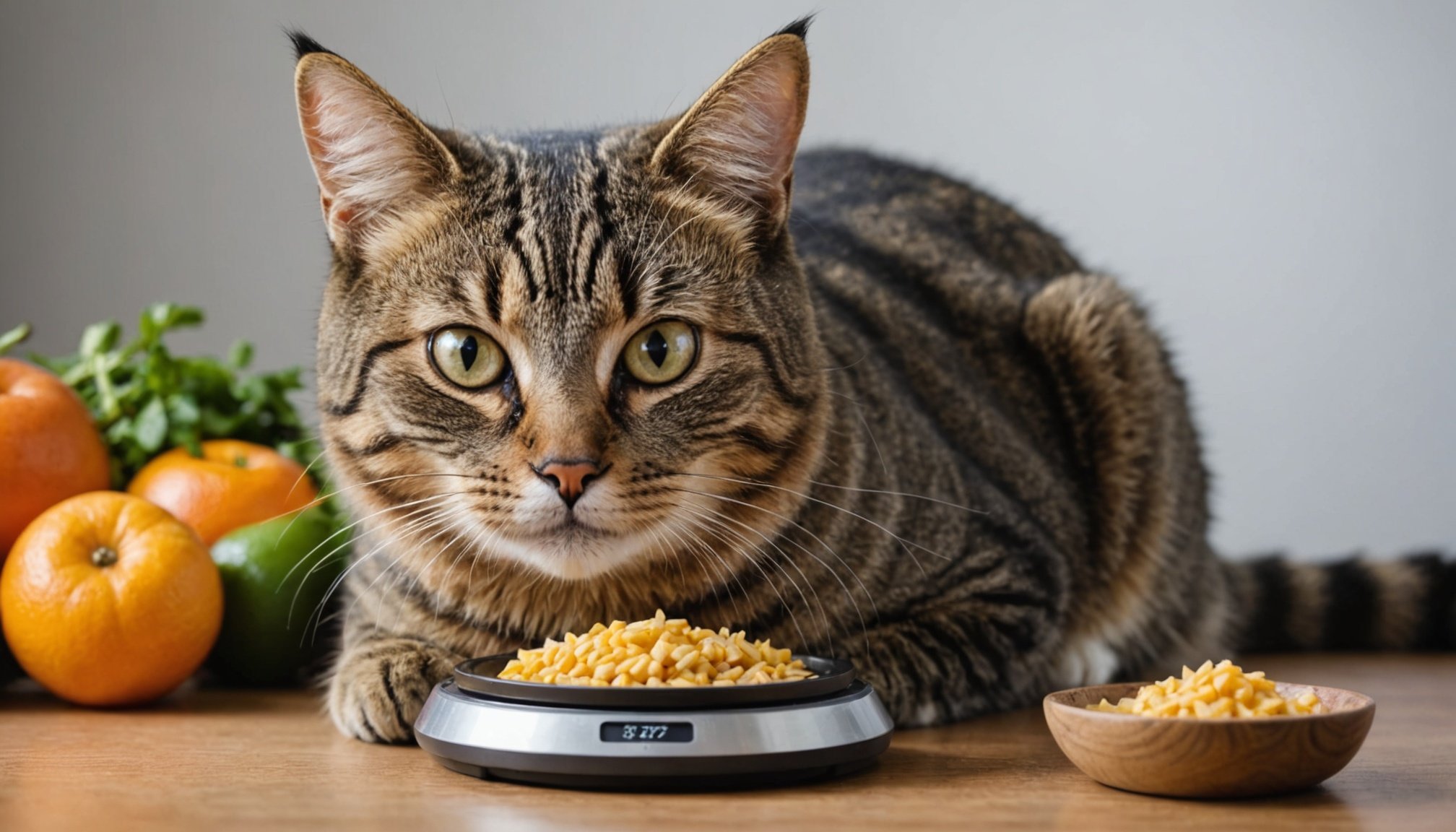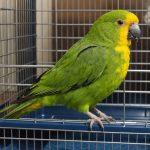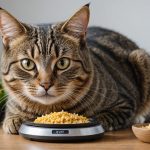Understanding Hyperthyroidism in Cats
Hyperthyroidism is a prevalent condition in older cats, characterised by an overproduction of the thyroid hormone. This results from the enlargement of the thyroid glands, most often triggered by a benign tumour. The heightened hormone levels lead to an increase in your cat’s metabolism, manifesting in various symptoms you might observe at home.
Recognising these symptoms is crucial. Common signs include weight loss despite a voracious appetite, hyperactivity, increased thirst and urination, and vomiting or diarrhoea. Moreover, you might notice behavioural changes such as irritability or restlessness. If left unattended, these symptoms could exacerbate, significantly affecting your cat’s quality of life.
To confirm hyperthyroidism in cats, a thorough diagnostic process is essential. Veterinary check-ups typically involve a physical examination and blood tests to detect elevated thyroid hormone levels. The vet may also recommend imaging tests like ultrasound to evaluate the thyroid glands’ size and structure. Timely diagnosis allows for prompt treatment, improving your pet’s health and well-being.
Stay observant of your cat’s behaviour and physical condition. Routine veterinary check-ups are invaluable, ensuring such conditions are caught early, offering the best possible outcomes for your feline friend.
Also to see : Building a safe haven for cats: essential tips to aid your feline’s orthopedic surgery recovery
Essentials of a Balanced Diet for Hyperthyroid Cats
A balanced diet plays a crucial role in managing hyperthyroidism in cats. Ensuring the right nutritional components can make a significant difference in their health and well-being.
Key Nutrients
For hyperthyroid cats, it’s vital to provide a diet that includes essential nutrients such as high-quality proteins and sufficient calories. Protein is essential because hyperthyroidism increases metabolism, requiring more protein to maintain muscle mass and energy levels. Additionally, taurine and omega-3 fatty acids are crucial for overall health and coat condition.
Importance of Low-Iodine Diets
A low-iodine diet is often recommended to manage thyroid function. Iodine is a key element in the production of thyroid hormones, and reducing its intake can help control overproduction. Commercially available therapeutic diets specifically designed for hyperthyroid cats are an excellent option, as they are formulated to have significantly reduced iodine levels.
Recommended Food Types
Deciding between wet and dry food is also important. Wet food is often recommended for hyperthyroid cats because it provides additional hydration and is generally lower in carbohydrates, aiding better weight management. In contrast, dry food can be convenient but may not meet all the dietary needs specific to hyperthyroid cats. Always consult with a veterinarian to tailor the diet based on individual needs and dietary restrictions.
Strategies for Effective Weight Management
When tackling weight management in hyperthyroid cats, understanding portion control and feeding frequency is essential. Portion control helps regulate caloric intake, which is pivotal for these felines. Using a digital scale to measure kibble or wet food ensures precision. This technique prevents overfeeding, a common issue when meals are eyeballed. Consistently measuring portions aids in maintaining both weight and necessary nutrition levels.
Addressing feeding frequency plays a vital role in metabolism regulation. Dividing a cat’s daily food allowance into smaller, more frequent meals can keep their metabolism active. This approach mimics natural eating behaviors and can also reduce the risk of gobbling and subsequent indigestion, promoting a more balanced energy distribution throughout the day.
Incorporating targeted strategies can prevent unwanted weight gain while supporting healthy energy levels. Consider:
- Consistent monitoring of meal portions using a scale
- Adjusting feeding frequency for sustained metabolism
- Introducing nutrient-rich diets to meet energy demands without excess calories
These steps ensure that while maintaining weight, health and energy needs are not compromised. Adapting to each cat’s unique needs can enhance their overall well-being, ensuring they remain energetic and healthy.
Boosting Energy Levels through Nutrition
Maintaining high energy levels throughout the day can often feel like a challenge, especially when dealing with demanding schedules. A strategic approach to nutrition can provide the much-needed energy boost. Consuming high-calorie foods is one practical solution. Foods such as nuts, avocados, and whole grains are not only calorie-dense but rich in nutrients that can offer sustained energy. These foods ensure that the body has a consistent energy supply without the crash often associated with sugary snacks.
Another vital aspect of nutrition is the inclusion of essential fatty acids. Found primarily in foods like flaxseeds, fish, and hemp seeds, these fats are crucial for brain health and overall well-being. They help in regulating cell function, which in turn affects how the body produces and uses energy.
For those looking to maximize their vitality, combining nutrition with exercise can be incredibly effective. While high-calorie foods fuel your day, routine exercise enhances endurance and strength, making it easier for the body to harness and utilize energy efficiently. This balanced approach to diet and fitness not only boosts energy but also fosters a healthier lifestyle and enhances physical performance, creating a cycle of positive health benefits.
Safe Treats and Supplements
When caring for a hyperthyroid cat, selecting safe treats becomes a priority. Cats with this condition often need special attention to their diet. Therefore, opt for treats low in iodine to avoid aggravating their thyroid issues. These can be found in most pet stores, labeled specifically for cats with thyroid conditions.
Incorporating dietary supplements into a hyperthyroid cat’s regimen can also be beneficial. Supplements such as Omega-3 fatty acids promote heart and kidney health, which is vital for cats with thyroid issues. Always consult a veterinarian to ensure these supplements don’t interact negatively with any medications your cat might be on.
Integrating Treats and Supplements
Successfully integrating treats and supplements into your cat’s regimen involves maintaining a balanced diet overall. Mix treats sparingly with their regular meals to avoid disrupting nutritional balance. Dietary supplements should also be introduced gradually, allowing you to monitor any changes in your cat’s behaviour or health.
Ensuring that any treat or supplement aligns with your hyperthyroid cat care plan is crucial. A holistic approach, tailored to your specific cat’s needs, will ensure the best possible health outcomes and maintain their well-being effectively. Always prioritize the advice of veterinary professionals when considering these additions.
Success Stories and Expert Tips
Managing hyperthyroid cats can be challenging, but many pet owners find comfort and inspiration in real-life success stories. These stories often involve a blend of diligent care, expert advice, and some trial and error. One memorable account involves a cat named Whiskers, diagnosed with hyperthyroidism at ten. By strictly adhering to dietary changes recommended by a pet nutritionist, alongside medication prescribed by her veterinarian, Whiskers’ owners witnessed a significant improvement in her overall health and energy levels within months.
Expert advice is invaluable in such cases. Veterinarians recommend routine screenings for early detection, while pet nutritionists emphasize the importance of a balanced diet tailored to the cat’s specific needs. Avoiding common mistakes, such as inconsistent medication routines or neglecting regular vet check-ups, is crucial. Instead, maintaining a structured regime and being attentive to any behavioural changes or symptoms can lead to successful management of this condition.
For those just beginning their journey with a hyperthyroid cat, remember these tips:
- Prioritize regular communication with your vet.
- Follow nutritional guidance meticulously.
- Observe and document any changes in your cat’s behaviour.
These practices not only aid in cat health but also set owners on a path to success.
Frequently Asked Questions
Curious about a hyperthyroid cat diet? Let’s clear up some common concerns.
Misconceptions About Hyperthyroid Diets
Many pet owners presume any hypoallergenic diet suffices for a hyperthyroid cat. However, a specialized diet formulated for hyperthyroidism ensures nutritional balance while addressing specific health needs. An effective diet often has controlled iodine levels, supporting thyroid regulation without overwhelming the feline system.
Expert Dietary Recommendations
Different experts advocate unique approaches. Some recommend commercial low-iodine diets while others suggest home-cooked meals, offering controlled ingredients. It’s important to consult with a veterinarian to determine which is suitable for your pet, taking into account their specific health needs and preferences.
Monitoring Your Cat’s Response
Once you implement dietary changes, it’s crucial to monitor how your cat responds. Look for signs of improved energy levels, weight stabilization, and normalised appetites. Regular veterinary check-ups enable tracking thyroid levels and adjustments to the diet if necessary. This proactive approach assists in managing hyperthyroidism effectively, ensuring that dietary tweaks contribute to your cat’s overall well-being.
These FAQs guide you through making informed decisions, ensuring your feline friend remains healthy and happy while living with hyperthyroidism.










